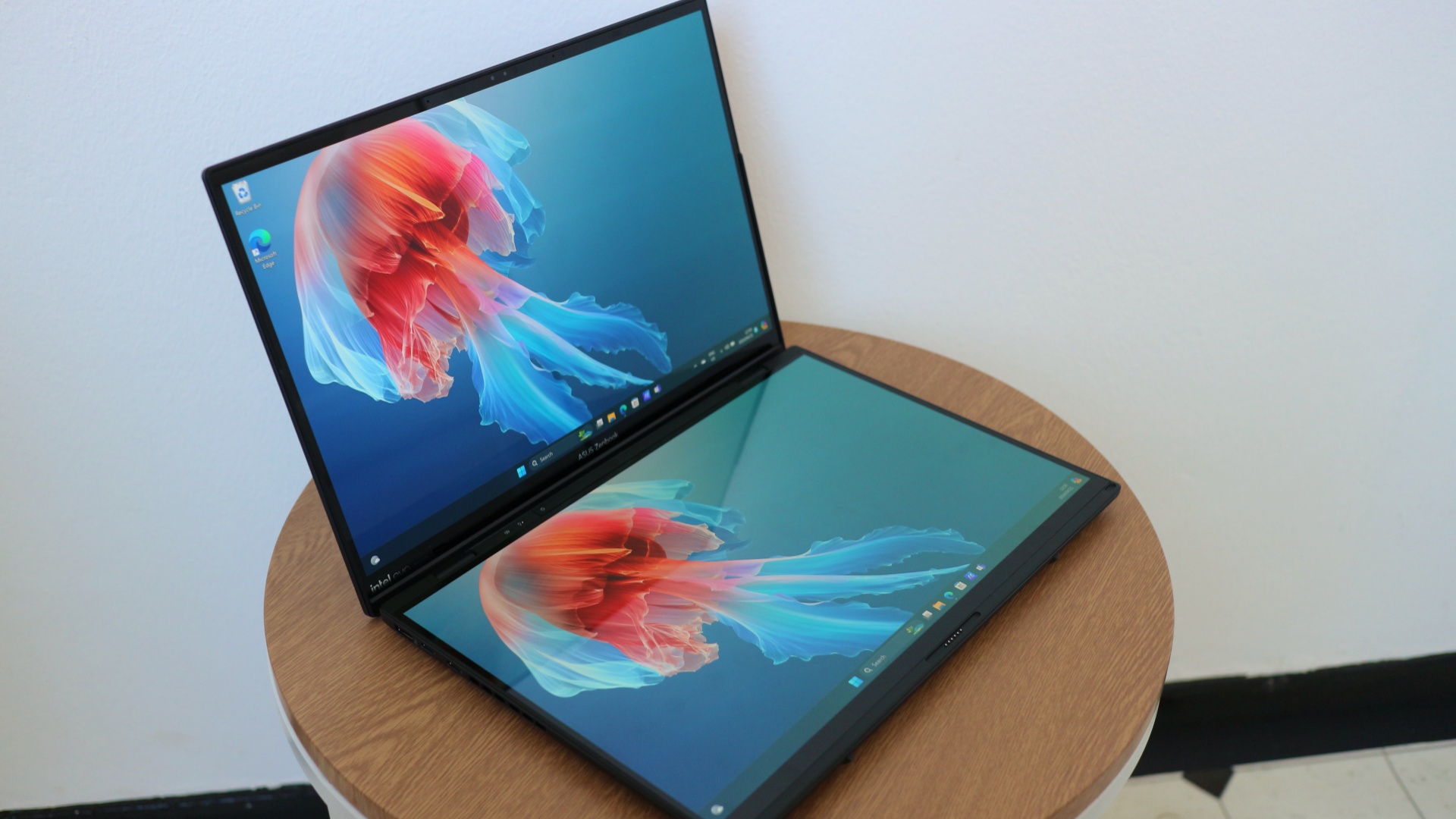You often hear productivity fundis talk about how two displays always being better than one when it comes to multitasking. While this thinking is often is associated with two different devices, what about slapping two large displays together into one laptop?
That’s precisely what ASUS has done for the 2024 iteration of its ZenBook Duo, a form factor that the Taiwanese company has brought to market for a number of years now.
The difference this year, however, compared to previous ones is the fact that the second display in the Duo is the same size – namely a 14″ OLED touch-enabled screen that delivers a resolution of 2880×1800.
In past years, the second display took up roughly 30 percent of the lower potion of the laptop, with the keyboard and trackpad sitting below it. Now the entire area is taken up by OLED, with a detachable Bluetooth-powered wireless keyboard sitting neatly above it for a traditional setup.
When detached, you can transform the laptop into a desktop-like form factor, either vertically or horizontally, leaving users with several options in terms of multi-tasking.
Well that’s the idea at least.
Having had the ZenBook Duo in for review over the past few weeks, we’re sharing our thoughts on this interesting piece of kit that does not come cheap. Does it deliver the multitasking that ASUS promises, or is it simply a case of wasted screen real estate?
Here’s what we discovered.

What lies beneath
Unlike past iterations of Duo, this one does not immediately make known what it has lying under the hood.
This as the aforementioned keyboard sits neatly on top of the second display. It therefore looks and performs quite nicely as a traditional laptop, with the keypad and trackpad layout similar to what ASUS normally uses on its premium devices, with the larger, squarer key caps present.
We do favour a bit of clickey-ness and snap from laptop keyboards, but that may also be the result on an unhealthy mechanical keyboard obsession that has grown since the pandemic.
In general this accessory is solid and responsive, both attached to the laptop or removed and connected wirelessly via Bluetooth.
As for that second display it looks just as good as the primary one, offering both a high degree of crispness and sharpness. We were also impressed by how vivid and bright is was even at some of the lower settings, as touch-enabled displays on convertible laptops can be a little dull at times. This is not the case here, with ASUS utilising what it calls a Lumina OLED.
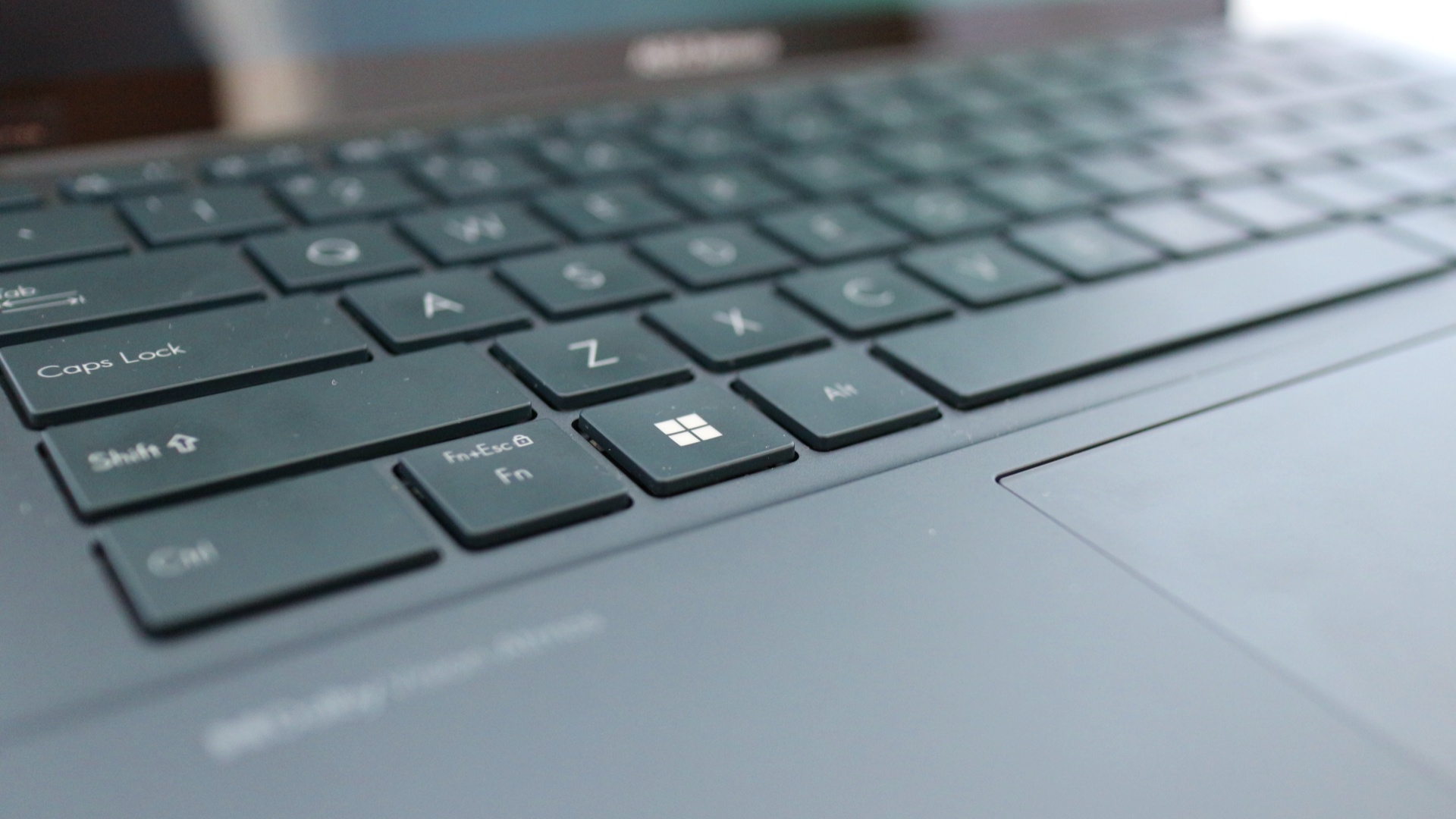
As this is a convertible notebook for all intents and purposes, the ZenBook Duo (2024) boasts a number of different modes – five of them by our count – dual-screen (with keyboard), dual-screen (without keyboard), sharing, desktop, and laptop.
While that is more than the average convertible, not all the modes have proved useful in our experience. The sharing mode, when the laptop is opened up to a 180-degree angle for two users to potentially use the device at the same time is not one we see. many people using.
The desktop mode, however, is quite handy and far better in terms of multitasking in our opinion than the dual-screen mode with keyboard, which can look a bit odd at times. We also find eye travel from side to side in the desktop mode to be far better for longer sessions than the up-down in the dual-screen mode with a keyboard.
As for the mode without a keyboard, it is really for designers or those who wish to make use of the stylus (included in the box), using the lower display to scribe, annotate, or draw. We are not artists by any stretch, but the digital keyboard you can launch, while serviceable, is never quite good enough to keep pace with the physical option. Don’t expect it then, to do a digital typing experience on par with a large smartphone or tablet.
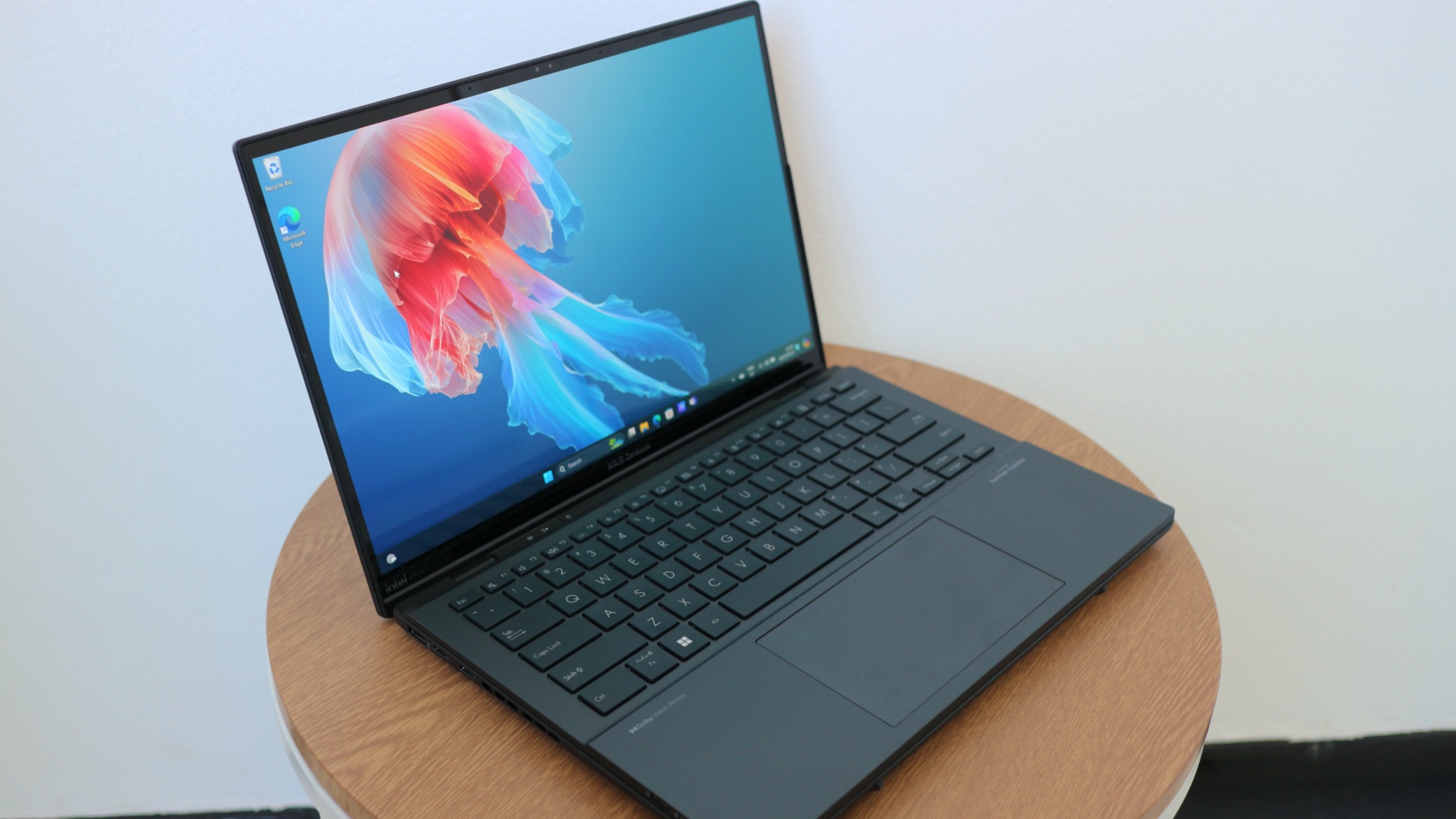


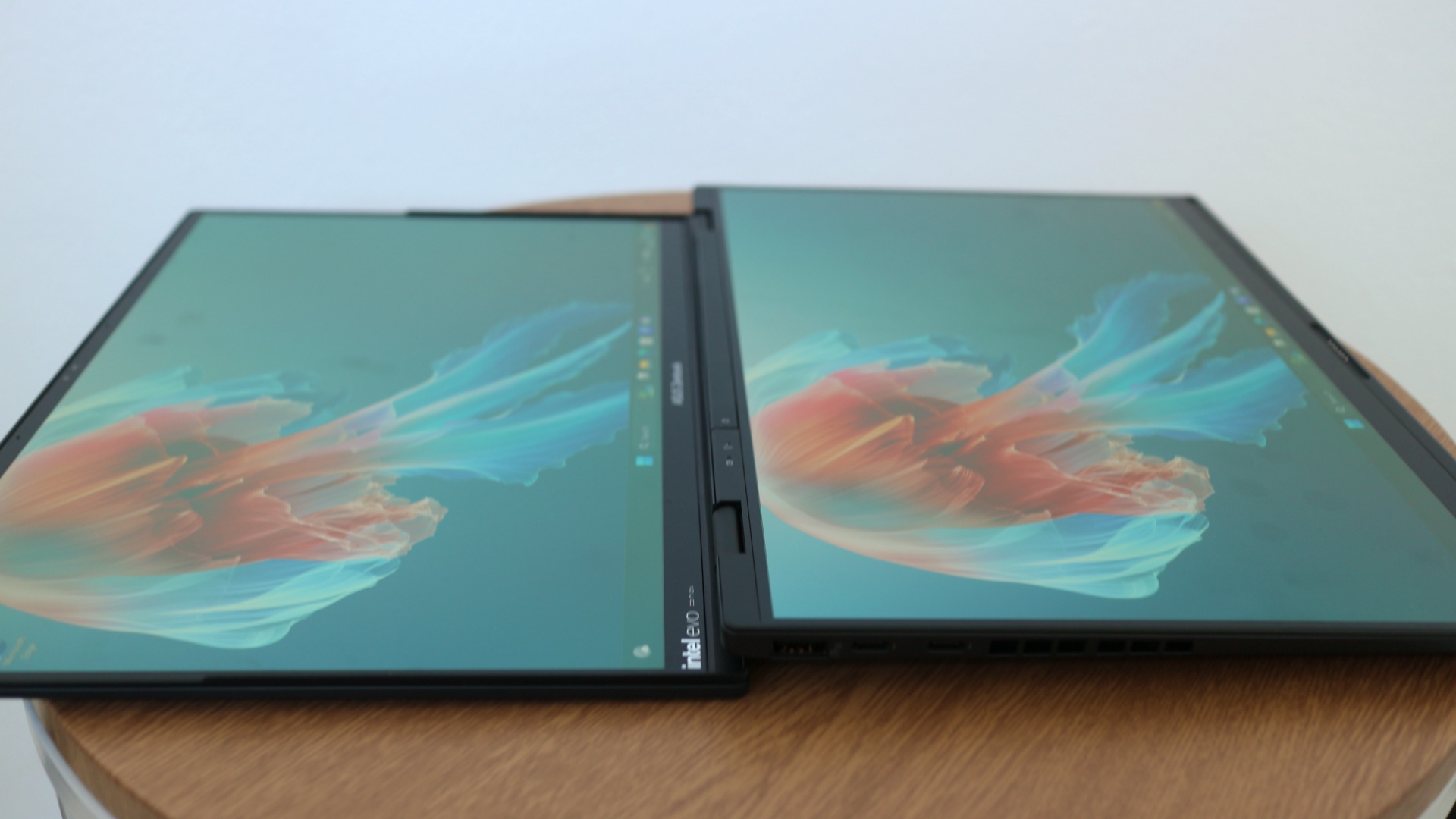
Putting in a shift
Now for performance, and on this front, this latest laptop from ASUS is well appointed.
At a glance, the key specifications of the ZenBook Duo (2024) UX8406MA are as follows:
| ZenBook Duo UX8406MA | |
| Display | 14″ 3K OLED (2880×1800) Touch-Enabled x 2 |
| Processor | Intel Core Ultra 9 Processor 185H @ 2.3GHz |
| GPU | Intel Arc Graphics |
| RAM | 32GB LPDDR5X |
| Storage | 1TB M.2 NVMe PCIe 4.0 SSD |
| Battery | 75Wh |
| Connectivity | WiFi 6E |
| Ports | 1x USB 3.2 Gen 1 Type-A; 2x Thunderbolt 4; 1x HDMI 2.1 TMDS; 1x 3.5mm Headphone Jack |
| Dimensions | 31.35 x 21.79 x 1.99 cm (width, length, height); 1.65kg |
| Audio | Built-in speakers and mic tuned by harman/kardon; Dolby Atmos support |
| RRP | R42 999 |
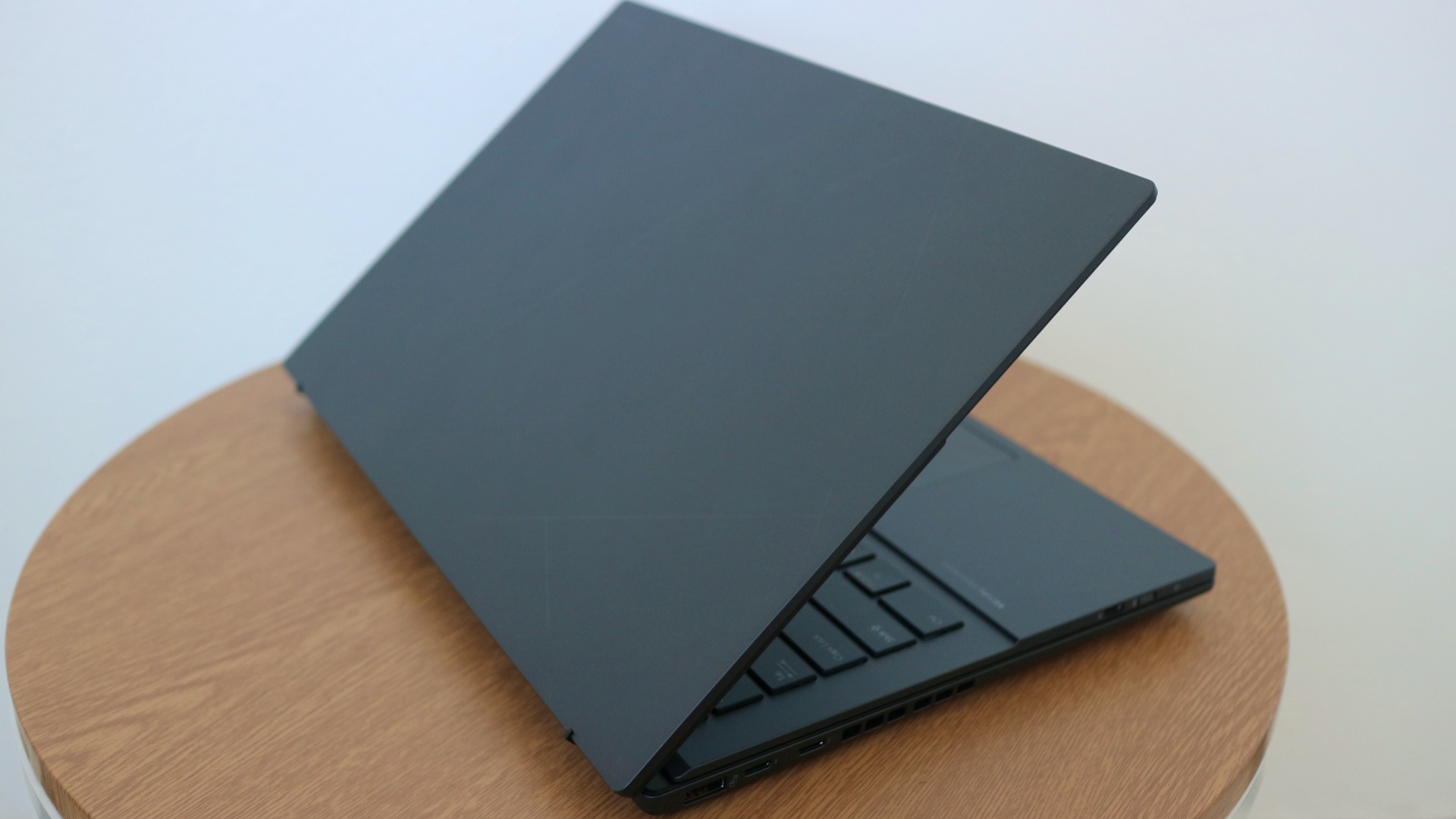
All of the above combines for a satisfyingly powerful laptop that does a little bit of everything well. You won’t be doing MacBook Pro levels of rendering, but most resource intensive creative/editing tasks are eaten up by the ZenBook Duo.
In terms of our benchmarking, it achieved an average score of 9 448.6 on CineBench, handily being the top performing ASUS we have reviewed to date. While we generally try not to put too much weight in the benchmarking experience of a smartphone, on a laptop of this ilk it is important, especially given that it costs over R40k to acquire one of these.
Perhaps a little more importantly (not that price versus performance is not important), this scores and real-world performance of the ZenBook Duo should leave users safe in the knowledge that they have a device that not only boasts two 3K displays, but has enough processing capability to power the increased real estate experience.
On the battery side of things, which is a serious consideration given that there are two screens at work here, in dual-screen mode, ASUS is touting up to eight hours of battery life. We got close to the seven hour mark before a charging port was needed.
We pushed this to a little over eight hours in the single screen mode, so while the ZenBook Duo can manage with remote work, it is best to choose an environment where access to plug points are plentiful, especially if you plan to go the desktop mode route.

Final verdict
At R42 999 (RRP) is not your run of the mill laptop, and as expected, has a price tag to match.
Ultimately, the choice to pick up this laptop comes down to one question – how effectively can you make use of the second display. If it’s simply to have a number of windows open at once, you may be doing it a disservice.
Instead, the ZenBook Duo (2024) is the type of laptop that yearns to be used to its fullest capacity. This means not only having multiple windows open, but running multiple applications at once too, as well as giving the stylus a spin for some design work or annotating too.
If you want this laptop to simply be a workhorse, it can certainly do that too, but again, there is so much more to the ZenBook Duo than that. If you’re curious and can make the most of the 28 combined inches or screen real estate, as well as flexibility and portability of this unique laptop, it is well worth considering.
FINAL SCORE: 8.5 OUT OF 10.


